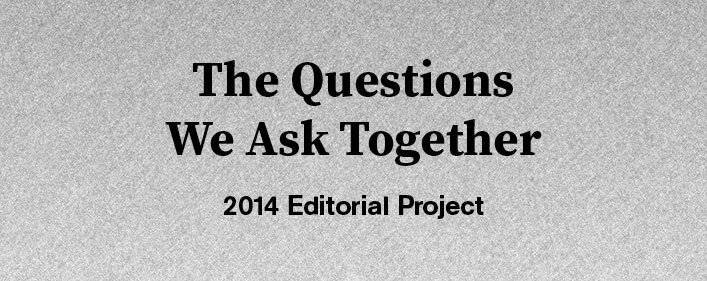What does social practice offer white artists?
Film still of Be Black, Baby sequence of Brian De Palma’s Hi, Mom 1970.
Ask not what social practice can do for you, but what you can do for social practice.
The first thought I have in response to this question is a cynical one: that cover for cultural tourism is the #1 thing social practice (SP) offers white artists.Though perhaps if the question were what does SP offer black artists (keeping with the binary aspects of the original) the cynical, or even crass reply maybe the same. The tourism perpetrated by artists, self identified as SP or not, involves class more often and more openly than it does race.This could be due in part to SP reliance on institutions (for funds, access, viability) which tend to require ways of boosting their education departments and outreach, to those delicately phrased, underserved communities. Art, whether SP or not, can be a great cover for the hallmarks activities of cultural tourism: observation of the other and superficial interaction.
Social Practice also offers white artists a way to explore their own Whiteness. This door is one I’ve not seen many SP artists walk through. A few years ago my colleague Kebrina Lott, pointed me towards Sara Ahmed essay A phenomenology of whiteness. Within the abstract Ahmed writes, “Whiteness could be described as an ongoing and unfinished history, which orientates bodies in specific directions, affecting how they ‘take up’ space, and what they ‘can do’. The paper considers how whiteness functions as a habit, even a bad habit, which becomes a background to social action.” Since Kebrina Lott has been writing and creating photography at the borders of this phenomenology, I asked her to respond to the posed question.
“Social practice offers white artists a way to obtain knowledge through experiences that are extraneously culture specific and create a value from this process that to a large degree, remains outside (or cryptic) to the communities in which were engaged.
What might this offer SP artists? Public trust, nice CV stuff, “widened” perspectives, grant money access, and an opportunity to commodify documented experiences derived from or of ‘the other’ (name any one) discreetly, as community engagement, as self design, as art… But, I think the same is true, for any artist.
Once we acknowledge white identity, we paradoxically sustain it, affirm it from the myth and everything associated with it. Thinking behind the question, whiteness might be a ticket for some artists to access other communities for social practice purposes. White as the stuff of generational wealth, generational education, entitlement, harkening back to the pioneer.”
I have brought up this question to others as well. Recently I was a guest with Zachary Kaplan in Sean Joseph Patrick Carney’s Bruce Quality Foundation University class, where the discussion was centered around Claire Bishop’s 2004 essay Antagonism and Relational Aesthetics and Brad Troemel’s What Relational Aesthetics Can Learn From 4Chan. The class talked about the good and the bad of SP’s methods, its limitations, its perceived sincerity, in relation to the legacy of /b/. While at the bar after class with several of the participants I brought up this question. There was a clear, “Whatever, that’s a weird question” response, maybe in part due to our reluctance to discuss race, let along whiteness. People also expressed dismay at SP projects that perform a light version of social work for brief periods of time: the parachuting in, leaving little more than a line on the artists CV. Detroit was brought up more than once, a critique readers here have endured before. As I did not want to lose the aspect of whiteness, I asked if the same critiques could be leveled at artists and projects such as Theaster Gates’s Dorchester Projects, Mel Chin’s Safe House/Fundred, or Rick Lowe’s Project Row House? Though they had some critiques of these projects around artistic merit, or aesthetics, they gave these artists a racial pass to make the work they did because these artists were not white. The thought that any artist should be given a racial pass on critique was a better head buzz than an ASMR video.
I would be interested in SP being used as a tool for white artist to use their whiteness consciously, to avoid the color-blind mindset that internalizes racism, and fully own the identity politics of being white.
René Kemp, Whitey, 2009.
About the contributor: Mack McFarland is an independent artist and curator who creates a home in Portland, OR. His current focus examines experimental formalism and looks at dissent aesthetics and its relationship to Utopian thought. His works aim to develop a space for the viewer to experience an intersection of visceral aesthetic and cognation. These explorations manifest in the form of exhibitions, postcards, and sculptures. He has exhibited nationally and internationally; screening videos at Pixelodeon Festival at the American Film Institute in Los Angeles, the La Enana Marron Film and Video Festival in Madrid, and at Cine Fantom in Moscow. McFarland has also created works for the Portland Institute for Contemporary Arts’ Time-Based Art Festival, and a three-month-long project for the Tacoma Art Museum, which Sheila Farr of the Seattle Times called “startling, nutty, and technologically relevant.” McFarland has been quoted as saying, “Wherever I am, I’m making.” His post-studio mantra has taken him to archives, karaoke microphones, canoes, and into his studio. mackmcfarland.tumblr.com
